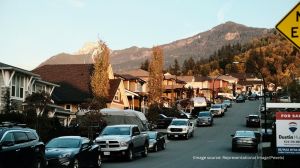Stay updated with the latest - Click here to follow us on Instagram
Afghanistan hit by fourth earthquake since August 31, latest of magnitude 5.4
The quake struck just hours after another strong aftershock Thursday night, deepening fears of more casualties in a region already devastated by a series of deadly tremors.
 A man collects belongings from the rubble of a collapsed house after a powerful earthquake struck eastern Afghanistan on Sunday, killing many people and destroying villages, in Mazar Dara, Kunar province, Afghanistan. (AP photo)
A man collects belongings from the rubble of a collapsed house after a powerful earthquake struck eastern Afghanistan on Sunday, killing many people and destroying villages, in Mazar Dara, Kunar province, Afghanistan. (AP photo)A magnitude 5.4 earthquake struck southeastern Afghanistan on Friday, the German Research Center for Geosciences (GFZ) said, according to Reuters. The tremor was recorded at a depth of 10 kilometres (6.2 miles).
Friday’s quake came just hours after another strong aftershock late on Thursday night, raising fears of more casualties and destruction in a region already reeling from a series of deadly tremors.
According to Reuters, the two aftershocks hit eastern Afghanistan within a span of 12 hours. The epicentre of Thursday’s tremor was in Shiwa district, Nangarhar province, near the Pakistan border, a provincial health department spokesperson said. Some initial reports of damage have emerged, though full assessments are ongoing.
Continuous aftershocks were reported across Nangarhar, a Reuters witness said, as survivors feared further collapses of homes and buildings. With most houses built of dry masonry, stone, and timber, many families have chosen to remain outdoors rather than risk staying inside.
 Residents from nearby towns and villages rush to aid survivors after Sunday night’s 6.0-magnitude quake in Kunar’s Nurgol district. (AP photo)
Residents from nearby towns and villages rush to aid survivors after Sunday night’s 6.0-magnitude quake in Kunar’s Nurgol district. (AP photo)
One of Afghanistan’s deadliest weeks
The series of earthquakes began on August 31, Sunday, when a magnitude 6 tremor struck at a depth of 10 km, devastating Nangarhar and Kunar provinces. It was followed by a 5.5-magnitude quake on Tuesday that triggered landslides, cutting off access to remote villages and halting rescue efforts.
The Taliban administration has so far confirmed at least 2,205 deaths and 3,640 injuries. More than 6,700 homes have been destroyed, authorities said.
Rescue workers continued to recover bodies from the rubble on Thursday. Aid groups warn that thousands have been left without food, medical supplies, and shelter. The United Nations has said the humanitarian situation remains dire as resources dwindle and survivors are forced to spend nights in the open.
The earthquakes primarily strike along the Hindu Kush mountain range, reported Reuters, where the Indian and Eurasian tectonic plates collide, making the region one of the world’s most quake-prone.
(With inputs from Reuters)
Photos



- 01
- 02
- 03
- 04
- 05



























